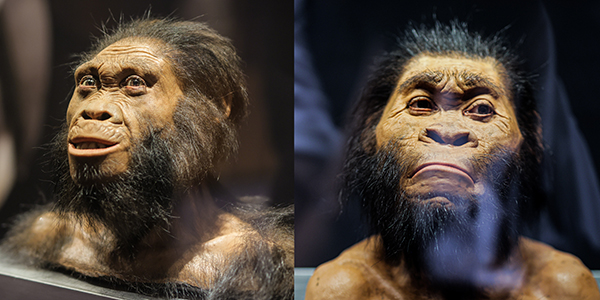Maropeng brings visitors Face to Face with early Hominins
- Wits University
The new Face To Face exhibit showcases hominins from The Cradle of Humankind that are brought to life by science and art.

The newly-launched Face To Face exhibit at Maropeng puts a face to the name as it combines art and science to showcase reconstructions of Homo naledi and Australopithecus sediba by world-renowned palaeoartist John Gurche.
The discovery of Homo naledi made headlines around the world in 2015 whilst the first specimen of Australopithecus sediba was discovered in 2008. Today, visitors are afforded the opportunity, for the very first time in South Africa, to compare face-to-face the bust reconstructions of these ancient hominins.
"In our quest to understand our ancient ancestors, we can measure their bones, reconstruct the environments they lived in and study any artefacts they left behind. But for many people, this is not enough. For many, the ultimate way of ‘knowing’ someone is to see their face," said artist John Gurche.
Gurche took the notion of attention to detail to a new level in his reconstruction, modelling the face alongside the muscular and bone structure of each species.
His creations bring to life mysterious creatures that were unearthed as fossils all over the world. His creations make the complex scientific investigation into our origins real and relatable for those who aren’t fossil hunters or palaeoscientists.
Maropeng curator Kimberleigh Tommy said that the exhibit focuses on the research side of these specimens, which were both unearthed at The Cradle of Humankind, a paleoanthropological site located about 50 km northwest of Johannesburg.
"We wanted to showcase the science that happens after the discovery. How do we learn about these hominins? This exhibit takes us away from the discovery and into the research," said Tommy.
The exhibition features mirror-like illustrations to allow visitors to see themselves as part of the origins story.
"We have designed some of these mirrors to reflect children because we as adults think we are the only ones doing the learning in these spaces when our most important guests are children. We want children to know that science needs them too," said Tommy.
The Cradle of Humankind was listed as a World Heritage Site in 1999 and received global recognition because of the astonishing number and diversity of hominin fossils and finds made at multiple sites.
